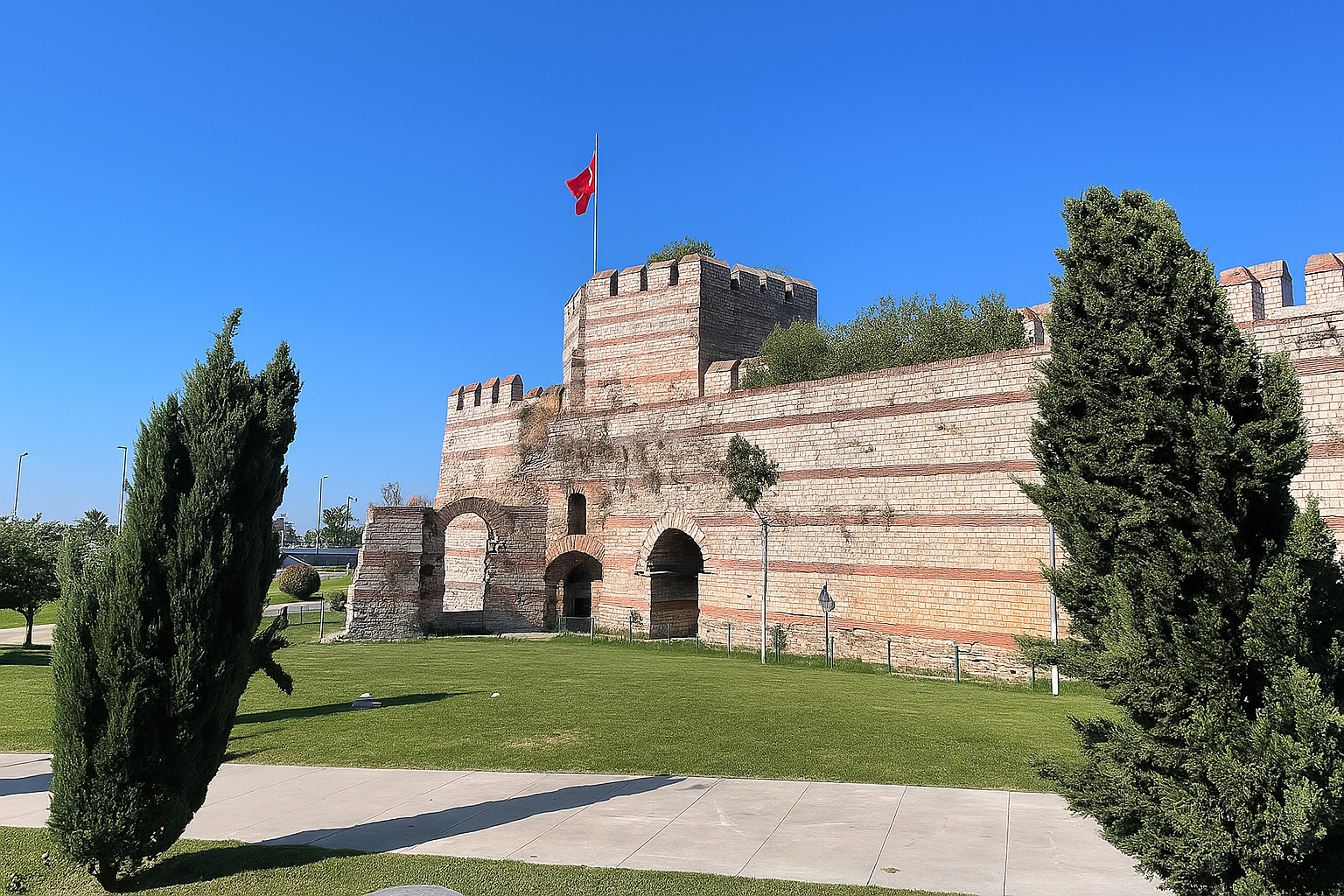
Theodosius Surları (The Walls of Istanbul - The Walls of Constantinople)
HISTORICAL BACKGROUND AND SIGNIFICANCE
The Theodosius Surları, or the Walls of Constantinople, are among the most significant historical structures in Istanbul, representing the might and resilience of the Byzantine Empire. Constructed during the reign of Emperor Theodosius II, between 413 and 447 AD, these walls were built as a defense mechanism against invasions and sieges. The city of Constantinople, strategically located between Europe and Asia, was a vital center of trade and culture, making it a target for various conquerors throughout history.
The walls were not merely a physical barrier; they symbolized the power and stability of the Byzantine Empire. They successfully protected the city from numerous attacks for over a thousand years, including the famous siege by the Avars in 626 AD and the Crusaders in 1204 AD. However, they ultimately fell to the Ottomans in 1453, marking the end of the Byzantine Empire and the beginning of a new era in the region.
ARCHITECTURAL FEATURES AND DESIGN ELEMENTS
The Theodosius Surları are a remarkable example of ancient military architecture. The walls stretch approximately 5.5 kilometers and are composed of three main sections: the outer wall, the inner wall, and a moat. The outer wall is about 12 meters high and features a series of towers and bastions, strategically placed to provide a vantage point for defenders. The inner wall, which is taller and thicker, stands at around 15 meters and includes a series of gates that allowed entry into the city.
One of the most impressive features of the walls is the use of a double wall system, which was innovative for its time. This design not only provided additional protection but also created a space between the walls that could be used for defense. The walls are constructed from a mixture of limestone and brick, showcasing the engineering prowess of the Byzantine builders. The towers, some of which still stand today, were adorned with decorative elements that reflected the artistic styles of the period.
CULTURAL AND RELIGIOUS IMPORTANCE
The Theodosius Surları hold immense cultural and religious significance for Istanbul. They are not only a testament to the architectural and military ingenuity of the Byzantine Empire but also a symbol of the city's rich history. The walls have witnessed the rise and fall of empires, the spread of Christianity, and the eventual establishment of Islam in the region.
As a UNESCO World Heritage Site, the walls are recognized for their historical value and are an essential part of Istanbul's identity. They serve as a reminder of the city's diverse cultural heritage, where East meets West, and various religions and traditions have coexisted for centuries.
VISITOR EXPERIENCE AND WHAT TO EXPECT
Visiting the Theodosius Surları is a captivating experience that allows you to step back in time. As you walk along the walls, you can explore various sections, including the well-preserved towers and gates. The panoramic views of the city and the Golden Horn from the walls are breathtaking and provide a unique perspective of Istanbul's landscape.
The site is accessible to visitors, with several entry points along the walls. Many areas have been restored, allowing for a more immersive experience. You can find informative plaques detailing the history and significance of different sections, making it an educational visit as well. The surrounding parks and gardens also provide a tranquil environment for relaxation and reflection.
INTERESTING FACTS AND ANECDOTES
1. The Theodosius Surları were once considered impenetrable, and many believed that the walls could withstand any siege. However, the Ottomans used innovative tactics, including massive cannons, to breach the walls during the conquest of Constantinople. 2. The walls have been featured in numerous films and literature, often symbolizing the struggle between different cultures and empires. They have inspired countless stories of heroism and resilience. 3. The walls are home to various legends, including tales of hidden treasures and ghostly apparitions of Byzantine soldiers guarding the city.
PRACTICAL VISITING INFORMATION
- **Hours**: The Theodosius Surları are open to visitors year-round. The best time to visit is during the spring and fall when the weather is mild. - **Best Times**: Early morning or late afternoon are ideal for avoiding crowds and enjoying the beautiful light for photography. - **Tips**: Wear comfortable shoes, as you will be walking along uneven surfaces. Bring water and snacks, as there are limited facilities nearby. Consider joining a guided tour for a more in-depth understanding of the walls' history and significance.
In conclusion, the Theodosius Surları are not just a set of ancient walls; they are a living testament to Istanbul's storied past. A visit to these monumental structures offers a unique glimpse into the city's rich history and cultural heritage, making it a must-see for anyone exploring Istanbul.